
Kefalonia: The Jewel of the Ionian Sea
Discover Kefalonia, a stunning Greek island in the Ionian Sea, renowned for its pristine beaches, charming villages, and natural wonders.
Kefalonia, the largest of the Ionian Islands, is a paradise of natural beauty and rich history. Known for its crystal-clear waters, stunning beaches, and picturesque villages, Kefalonia offers a perfect blend of relaxation and adventure. The island is home to Myrtos Beach, often cited as one of the most beautiful beaches in the world, where the turquoise waters meet the white pebbles to create a breathtaking view. Explore the charming town of Argostoli, the island's capital, where you can indulge in local cuisine, visit the Archaeological Museum, and take a stroll along the beautiful promenade lined with palm trees. Don't miss the opportunity to visit Fiskardo, a quaint village that has retained its traditional architecture and offers a serene harbor scene. Nature lovers will be enchanted by the Melissani Cave, an underground lake that reveals its magical beauty when the sunlight penetrates through the cave's roof. Another must-visit is the Drogarati Cave, famous for its impressive stalactites and stalagmites. For those seeking a spiritual experience, the Monastery of Agios Gerasimos, the patron saint of the island, offers a peaceful retreat with its beautiful gardens and church.
Local tips in Kefalonia
- Visit Myrtos Beach early in the morning to avoid crowds and capture the best photos.
- Rent a car to explore the island's hidden gems and remote beaches at your own pace.
- Try the local Robola wine, a unique variety that is native to Kefalonia.
- Wear comfortable shoes when visiting caves and monasteries as some require a bit of walking.
- Check the local ferry schedules if you plan to visit nearby islands like Ithaca or Zakynthos.
Kefalonia: The Jewel of the Ionian Sea
Kefalonia, the largest of the Ionian Islands, is a paradise of natural beauty and rich history. Known for its crystal-clear waters, stunning beaches, and picturesque villages, Kefalonia offers a perfect blend of relaxation and adventure. The island is home to Myrtos Beach, often cited as one of the most beautiful beaches in the world, where the turquoise waters meet the white pebbles to create a breathtaking view. Explore the charming town of Argostoli, the island's capital, where you can indulge in local cuisine, visit the Archaeological Museum, and take a stroll along the beautiful promenade lined with palm trees. Don't miss the opportunity to visit Fiskardo, a quaint village that has retained its traditional architecture and offers a serene harbor scene. Nature lovers will be enchanted by the Melissani Cave, an underground lake that reveals its magical beauty when the sunlight penetrates through the cave's roof. Another must-visit is the Drogarati Cave, famous for its impressive stalactites and stalagmites. For those seeking a spiritual experience, the Monastery of Agios Gerasimos, the patron saint of the island, offers a peaceful retreat with its beautiful gardens and church.
When is the best time to go to Kefalonia?
Iconic landmarks you can’t miss
Melissani Cave Lake
Explore the magical Melissani Cave Lake in Kefalonia, where stunning turquoise waters and rich Greek mythology create an unforgettable experience.
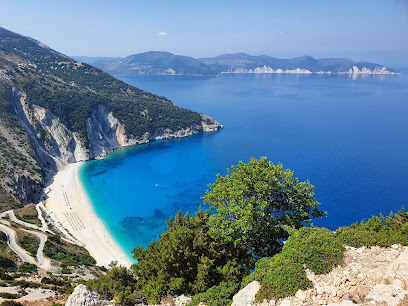
Saint Theodore Lighthouse
Discover the enchanting Saint Theodore Lighthouse, a historical landmark in Argostoli, where stunning views and maritime heritage await.
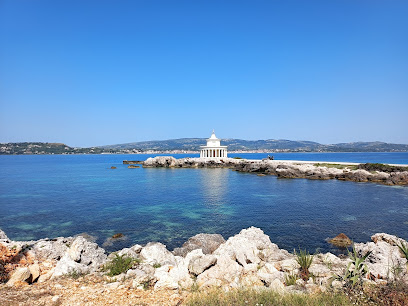
Old Vlachata
Discover the captivating ruins of Old Vlachata in Sami, Greece, a historical landmark that whispers tales of a vibrant past amid stunning natural beauty.
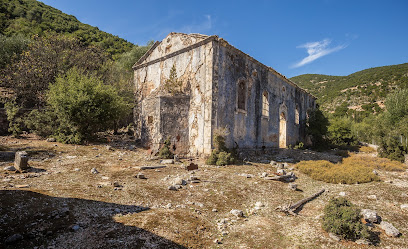
Acropolis of Ancient Sami
Discover the Acropolis of Ancient Sami, a historical landmark offering breathtaking views and a glimpse into Greece's rich past in scenic Sami.
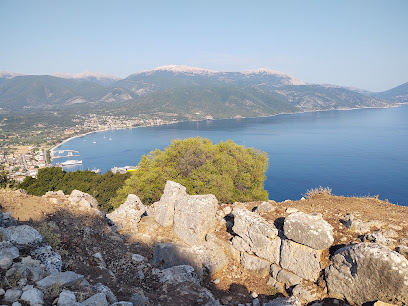
Βοτανικός Κήπος Κεφαλονιάς
Explore the Botanical Garden of Kefalonia, a serene oasis filled with native plants and vibrant flowers, perfect for nature lovers and tranquil retreats.
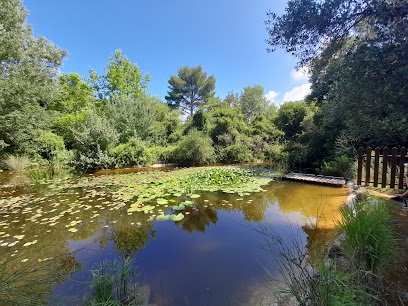
Italian Memorial Akoui
Explore the Italian Memorial Akoui in Argostoli, Kefalonia, a historical tribute to the Acqui Division's bravery during World War II amidst stunning landscapes.
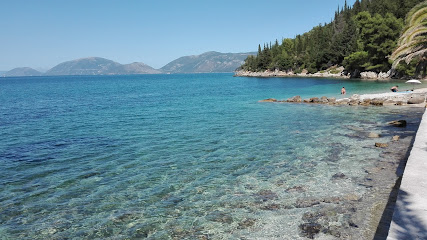
Cyclopean fortifications of Krani
Explore the Cyclopean fortifications of Krani, an ancient marvel near Argostolion, showcasing impressive stone architecture and breathtaking views.
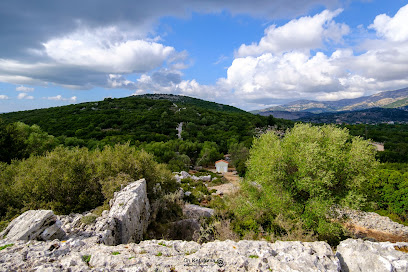
Statue of Nikos Kavvadias
Explore the Statue of Nikos Kavvadias in Argostolion, a serene homage to Greece's poetic legacy amidst breathtaking coastal views.
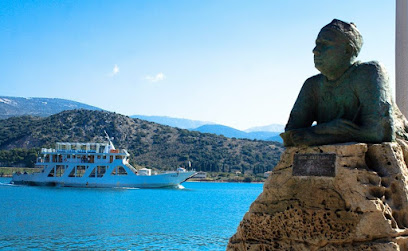
Ίδρυμα Υιών Παναγή Φωκά–Κοσμετάτου
Explore the rich cultural heritage of Kefalonia at the Focas-Cosmetatos Museum, a treasure trove of art and history in Argostoli.
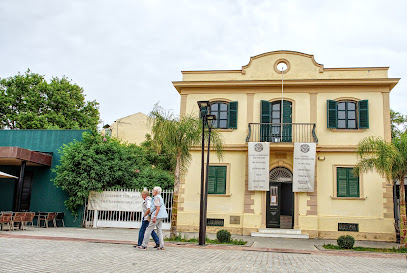
Ancient Krani
Immerse yourself in the history of Ancient Krani, a captivating landmark in Kefalonia, Greece, where ancient architecture meets breathtaking scenery.

Stellatos Beach
Experience the tranquil beauty of Stellatos Beach in Cephalonia, where golden sands meet crystal-clear waters for an unforgettable getaway.
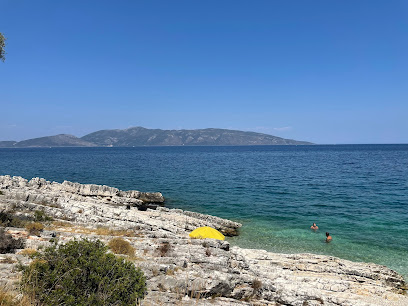
Unmissable attractions to see
Ai Helis Beach
Experience the tranquil beauty of Ai Helis Beach in Svoronata, where golden sands meet crystal-clear waters for a perfect Mediterranean getaway.
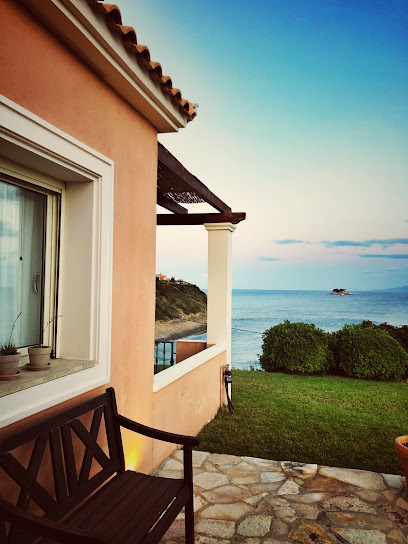
Alaties Beach
Experience the serene beauty of Alaties Beach in Erisos, Greece, where crystal-clear waters and stunning rock formations await your discovery.
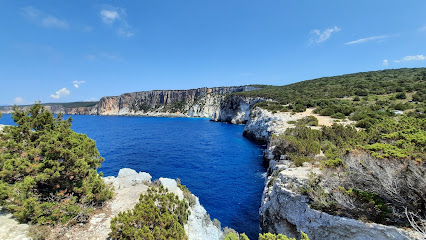
Fteri Beach
Discover the pristine beauty of Fteri Beach, a secluded paradise on Kefalonia with crystal-clear waters and serene landscapes perfect for relaxation.
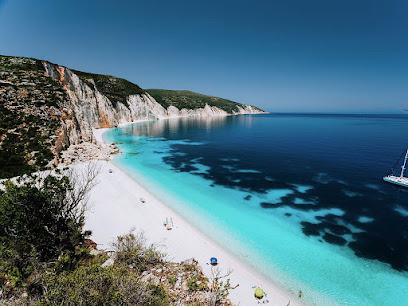
Fiskardo Beach
Explore Fiskardo Beach, a stunning destination in Greece known for its crystal-clear waters, soft sands, and picturesque surroundings.
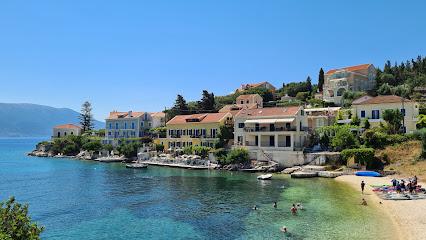
Kounopetra Beach
Discover the serene beauty of Kounopetra Beach in Kefalonia, where crystal-clear waters meet soft sands for the ultimate relaxing getaway.
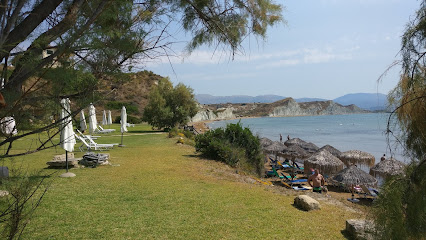
Eglina Beach
Discover the tranquil beauty of Eglina Beach in Cephalonia, Greece, where soft sands meet crystal-clear waters for the perfect getaway.
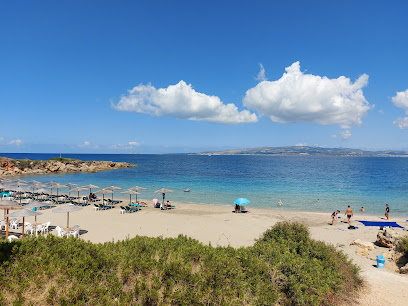
Jerusalem Beach
Experience the breathtaking beauty of Jerusalem Beach in Erisos, where golden sands meet azure waters for unforgettable moments under the sun.
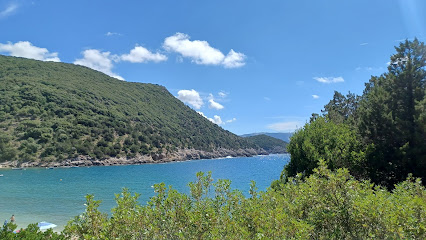
Myrtos Cave
Experience the breathtaking beauty of Myrtos Cave, a hidden natural gem near Myrtos Beach, perfect for exploration and relaxation.
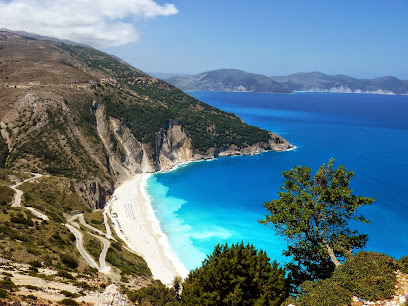
Ainos National Park
Discover the stunning landscapes and diverse wildlife of Ainos National Park, a must-visit destination for nature lovers in Cephalonia, Greece.
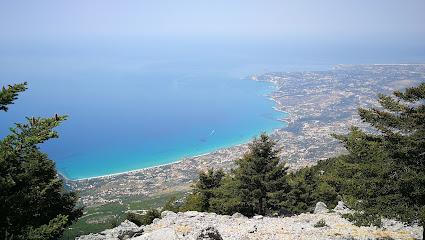
Ainos National Park
Discover the breathtaking beauty of Ainos National Park in Cephalonia, where rare flora and fauna meet stunning landscapes and outdoor adventures.
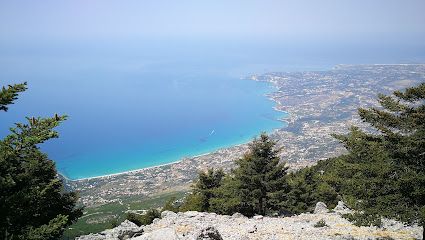
Shiza Cross (Kambi)
Experience the breathtaking views and cultural significance of Shiza Cross in Kambi, a must-see tourist attraction in Greece.
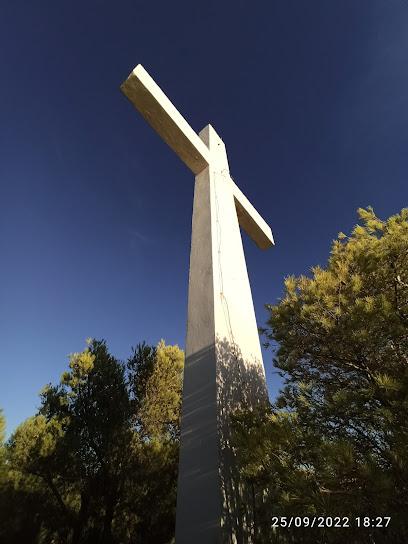
Fanari Beach
Discover the tranquil beauty of Fanari Beach in Cephalonia, Greece, where crystal-clear waters meet golden sands for a perfect vacation escape.
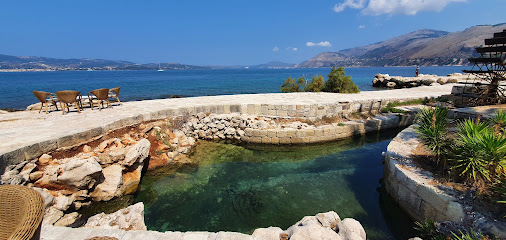
Μονή Καθαρών - Γεννήσεως της Υπεραγίας Θεοτόκου
Explore the serene Moní Katharón in Greece, a monastery offering breathtaking views, rich history, and a peaceful retreat for all visitors.
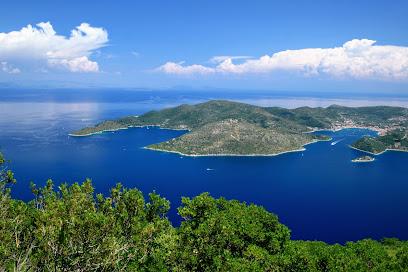
ADAMIEION Ceramic Art Studio
Discover the art of pottery at ADAMIEION Ceramic Art Studio in Zakynthos, where creativity meets tradition in a vibrant artistic community.

Βοτανικός Κήπος Κεφαλονιάς
Explore the enchanting Botanical Garden of Kefalonia in Argostoli, a peaceful retreat showcasing the island's diverse flora and stunning landscapes.

Essential places to dine
Ladokolla stin Plagia
Experience authentic Greek cuisine at Ladokolla stin Plagia in Lixouri, where every dish tells a story and every meal is a celebration.
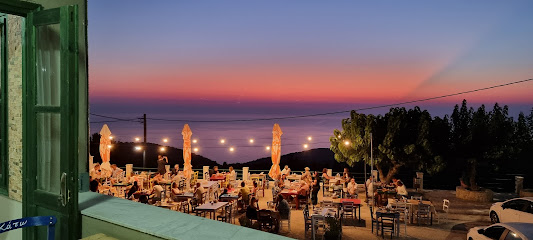
Captain Nikolas family tavern
Experience authentic Greek dining at Captain Nikolas Family Tavern in Paliki - where every meal tells a story.
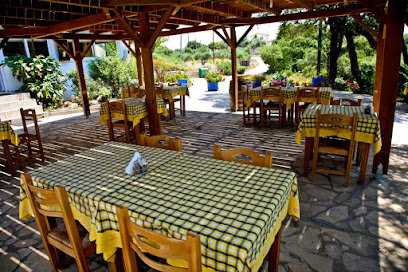
Avithos Preview
Experience authentic Greek cuisine at Avithos Preview near stunning Avithos Beach - a culinary delight in every bite!
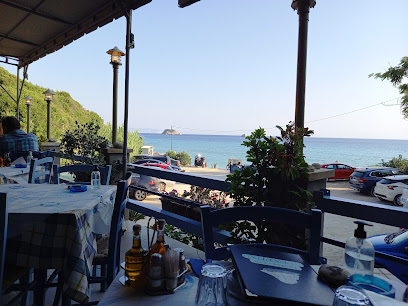
Tassia Restaurant
Experience authentic Greek flavors at Tassia Restaurant in Fiskardo, Kefalonia - where culinary tradition meets stunning seaside views.

Ammos Beach Bar
Discover modern Greek flavors at Ammos Beach Bar in Skala – where exquisite cuisine meets stunning seaside views.
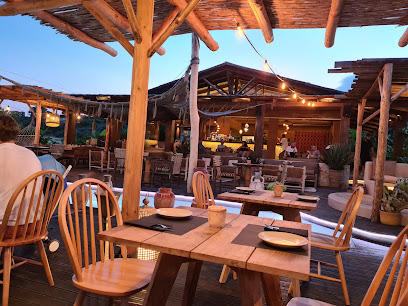
Ampelaki Greek Restaurant
Experience authentic Greek cuisine at Ampelaki Restaurant in Argostoli - where tradition meets taste in every dish.
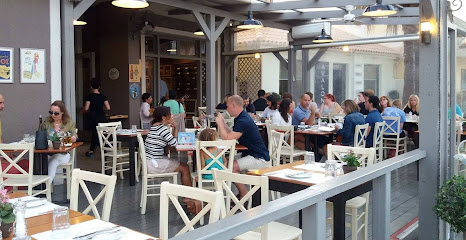
Avli
Discover Avli in Lixouri - where traditional Greek cuisine meets modern elegance for an unforgettable dining experience.

Olive Lounge Bar & Restaurant
Experience authentic Greek flavors and vibrant ambiance at Olive Lounge Bar & Restaurant in Kastro - your ultimate dining destination.
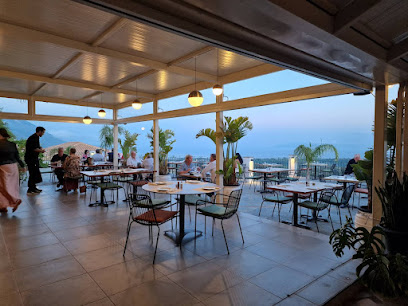
Il Familia
Experience authentic Greek flavors at Il Familia in Kefalonia - where every dish tells a story.
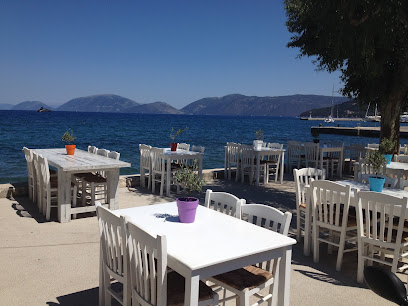
Anemos
Experience authentic Greek cuisine at Anemos on Kaminia Beach – where flavor meets stunning seaside views.
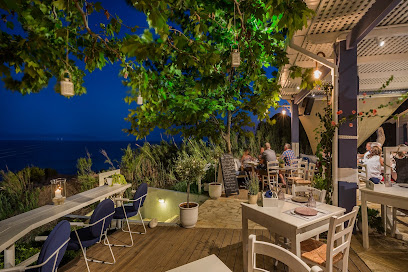
Vardiani Island Restaurant + Bar
Experience authentic Greek cuisine and breathtaking sea views at Vardiani Island Restaurant + Bar on Kefalonia's stunning Xi Beach.

Kastro Cafe Κεφαλονιά
Experience delightful Greek breakfasts at Kastro Cafe in Kefalonia – where tradition meets taste amidst stunning landscapes.
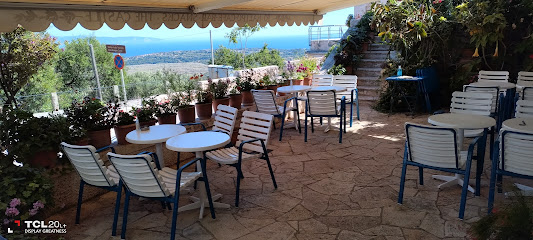
Mikelatos Restaurant
Experience authentic Greek cuisine with a creative twist at Mikelatos Restaurant in Skala - where tradition meets innovation.
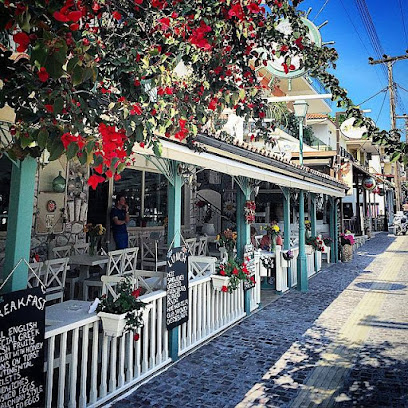
Alati
Experience exquisite Mediterranean cuisine at Alati in Erisos, Kefalonia - where fresh ingredients meet stunning coastal views.
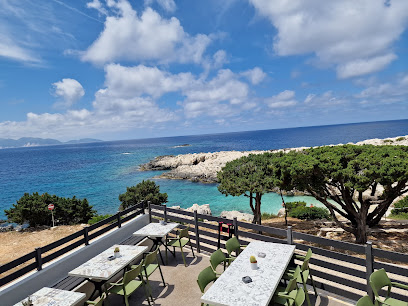
Esperides Restaurant
Experience authentic Greek cuisine in Svoronata at Esperides Restaurant, where fresh ingredients meet warm hospitality.
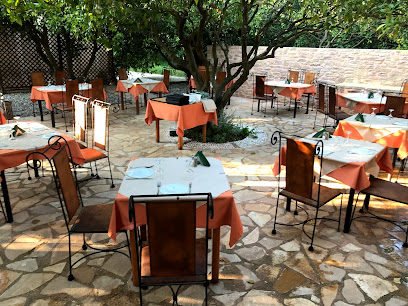
Markets, malls and hidden boutiques
Cocorrina
Explore the magic of Cocorrina in Argostoli, where unique gifts, books, and candles create a world of creativity and inspiration.
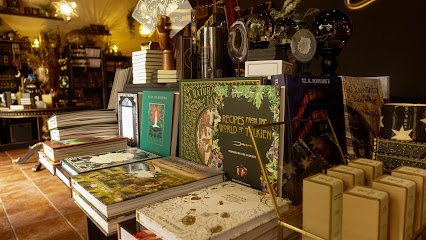
Kivos Books & More
Explore Kivos Books & More in Argostoli, a delightful bookstore offering a diverse selection of literature and local crafts in a cozy atmosphere.
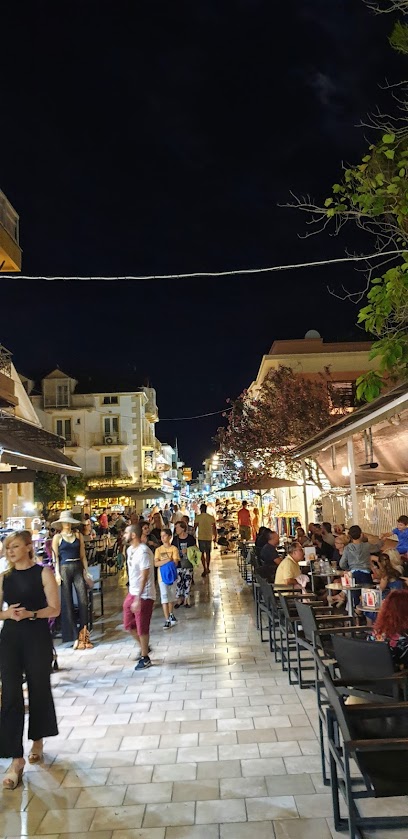
Down the Rabbit Hole, Kefalonia
Discover the enchanting craftsmanship of Down the Rabbit Hole, where unique jewelry pieces capture the essence of Kefalonia's beauty.
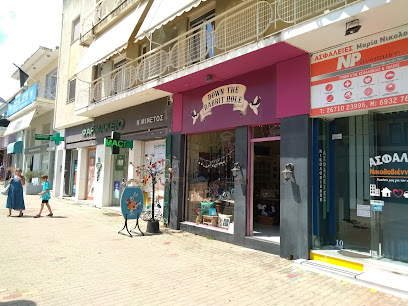
Lithostroto shopping marble walkway
Experience the enchanting Lithostroto shopping walkway in Argostoli, where marble paths lead to delightful shops and authentic Greek cuisine awaits.
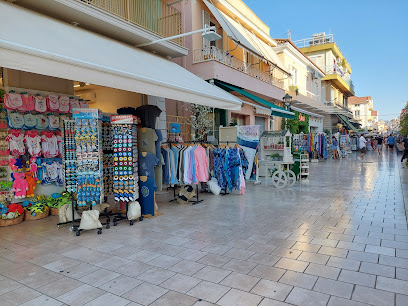
Eros Deli
Discover the flavors of Greece at Eros Deli, a charming grocery store in Argostoli, perfect for culinary enthusiasts and tourists alike.

Romi Women's Apparel
Explore Romi Women's Apparel in Argostoli for unique women's fashion, shoes, and handbags that reflect the beauty of Kefalonia.
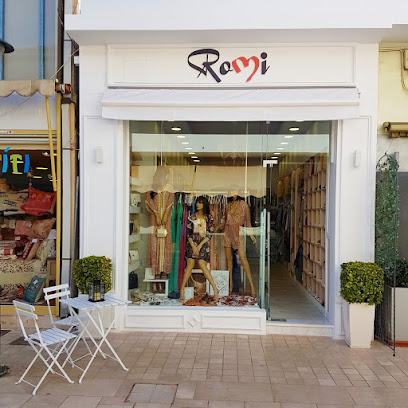
Τζανετατος
Discover the ultimate shopping destination in Argostolion at Τζανετατος, where diverse shops and delightful dining await.
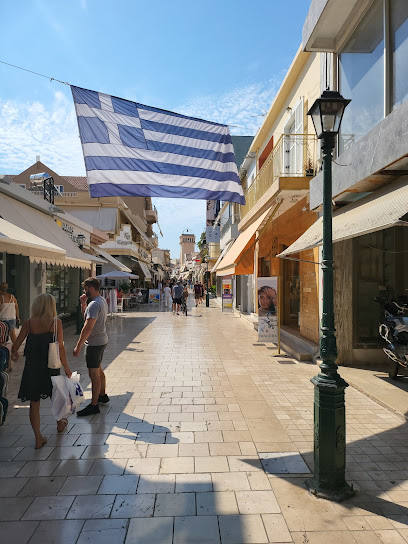
Fantasia Toys
Discover a magical toy wonderland at Fantasia Toys in Argostoli, where creativity and fun come to life for children of all ages.
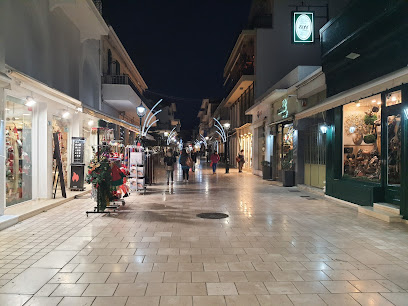
Kefalonian Product Boutique
Explore Kefalonia's rich heritage at the Kefalonian Product Boutique, your destination for unique gifts and organic food products.
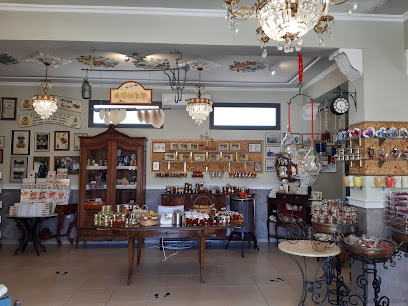
TZANNATOS JEWELLERS
Explore Tzannatos Jewellers in Argostoli for exquisite watches and exceptional craftsmanship, the perfect luxury souvenir from Greece.

Alegria gift shop
Explore Alegria Gift Shop in Argostoli for unique handcrafted souvenirs and local treasures that capture the spirit of your travels.
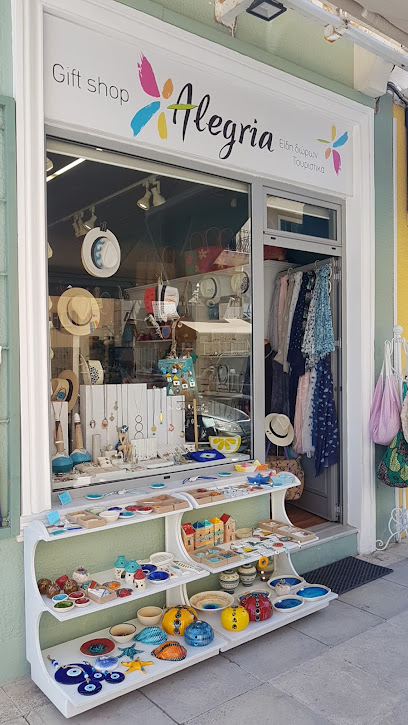
Veronica's Jewellery Lassi
Explore Veronica's Jewellery in Lassi for unique, handcrafted pieces reflecting the beauty of Greek craftsmanship.
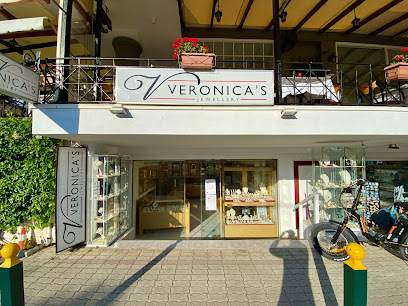
Welcome Stores
Explore cutting-edge electronics and exceptional service at Welcome Stores in Argostoli, your ultimate tech destination in Kefalonia.
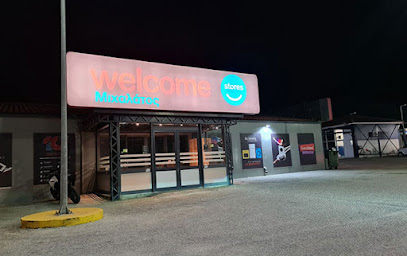
A. TSILIMIDOS
Explore A. TSILIMIDOS in Argostoli for a unique shopping experience with bridal fashions, luggage, and stylish clothing to suit every tourist's taste.
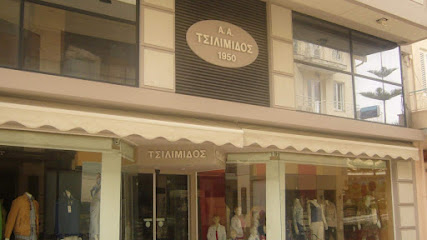
AnnaMaria’s
Explore AnnaMaria’s in Fiskardo for unique clothing and accessories that embody the spirit of Greek island fashion.
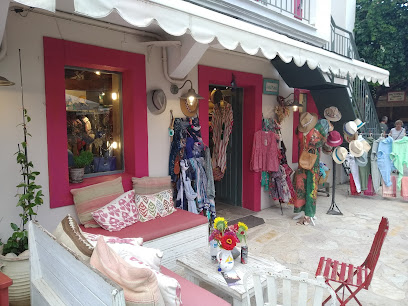
Essential bars & hidden hideouts
Ammos Beach Bar
Discover Ammos Beach Bar in Skala for a unique dining experience by the sea, featuring delicious food and stunning Mediterranean views.
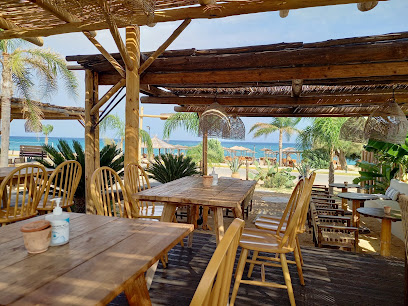
Olive Lounge Bar & Restaurant
Experience authentic Greek cuisine and vibrant nightlife at Olive Lounge Bar & Restaurant in Kastro, a perfect blend of tradition and modern flair.
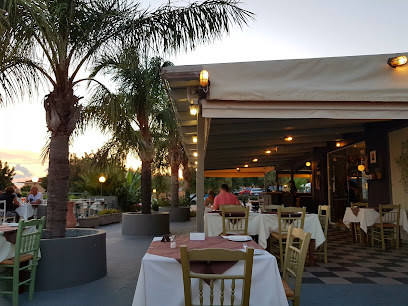
Οίνοψ wine bar restaurant
Explore the exquisite flavors and cozy ambiance of Οίνοψ Wine Bar Restaurant in Argostoli, where local cuisine meets fine wines.
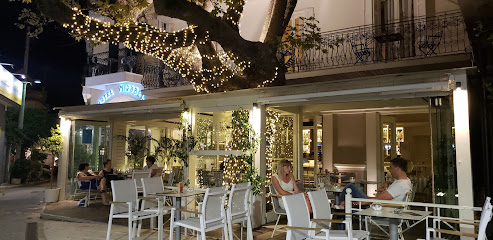
Bee's Knees The Bar
Discover the vibrant nightlife at Bee's Knees The Bar, a premier cocktail destination in Argostoli, Greece, offering unique drinks and a lively atmosphere.
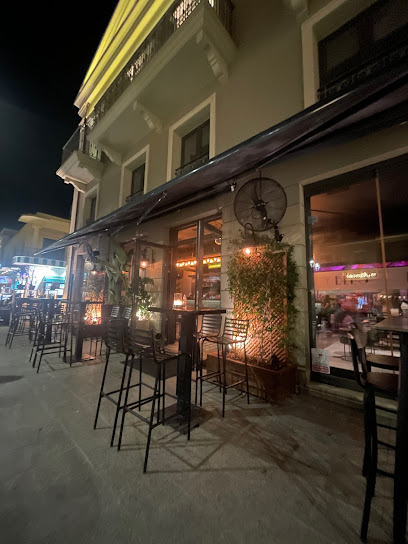
Metaxa Bar
Experience the perfect blend of relaxation and vibrant atmosphere at Metaxa Bar, your ideal beachside retreat in Skala.
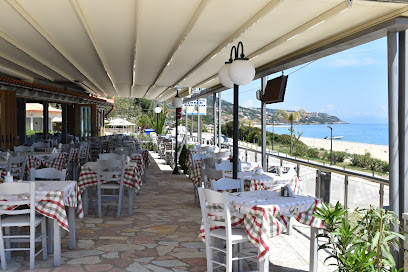
Logos Grand View
Discover the enchanting ambiance of Logos Grand View, where stunning views and delightful drinks blend perfectly for an unforgettable experience in Argostoli.

Trentis Bar
Experience the vibrant nightlife at Trentis Bar in Argostoli, where expertly crafted cocktails and a lively atmosphere await every visitor.

Crazy George's
Discover Crazy George's in Svoronata, a vibrant bar offering delicious drinks, stunning sea views, and an unforgettable nightlife experience.
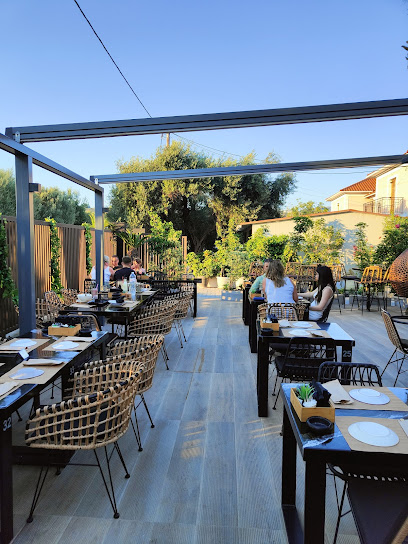
BARCODE
Discover the vibrant nightlife at BARCODE in Argostolion, a perfect blend of cocktails, music, and local culture on your Kefalonia adventure.
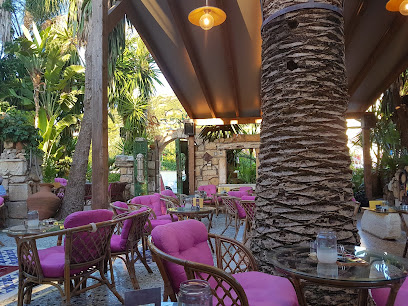
Aqua Marina Taverna
Experience the charm of Aqua Marina Taverna in Argostolion, where refreshing drinks, live music, and authentic Greek cuisine await by the sea.
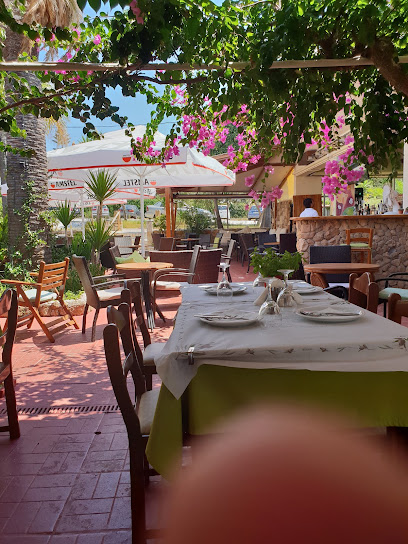
Eden Bar
Discover the vibrant atmosphere of Eden Bar in Argostoli, Greece, where expert mixology meets tropical charm for an unforgettable nightlife experience.
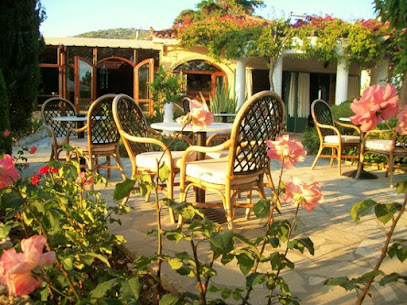
Kraken Bar
Experience the lively nightlife at Kraken Bar in Sami, Kefalonia, offering affordable drinks and a vibrant atmosphere for an unforgettable evening.

Mojito
Discover Mojito Bar in Sami, a vibrant seaside retreat offering refreshing cocktails, stunning views, and a lively atmosphere perfect for relaxation.
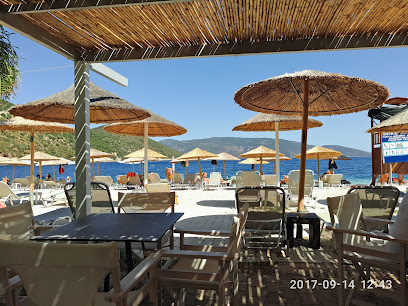
Sally's Bar
Discover the vibrant nightlife at Sally's Bar in Skala, where refreshing cocktails and a lively atmosphere await every visitor.

My Way Bar
Discover the heart of Skala's nightlife at My Way Bar, where exquisite cocktails meet a lively sports atmosphere.
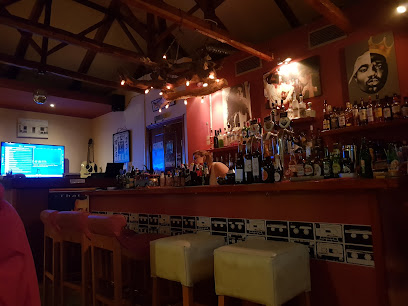
Local Phrases about Kefalonia
-
- HelloΓεια σας
[Yah sas] - GoodbyeΑντίο
[Adio] - YesΝαι
[Ne] - NoΌχι
[Ohi] - Please/You're welcomeΠαρακαλώ
[Parakalo] - Thank youΕυχαριστώ
[Efharisto] - Excuse me/SorryΣυγγνώμη
[Signomi] - How are you?Πώς είστε;
[Pos iste] - Fine. And you?Καλά. Εσείς;
[Kala. Esis] - Do you speak English?Μιλάτε Αγγλικά;
[Milate Anglika] - I don't understandΔεν καταλαβαίνω
[Den katalaveno]
- HelloΓεια σας
-
- I'd like to see the menu, pleaseΘα ήθελα να δω το μενού, παρακαλώ
[Tha ithela na do to menu, parakalo] - I don't eat meatΔεν τρώω κρέας
[Den troo kreas] - Cheers!ΥΓΕΙΑ!
[Yia] - I would like to pay, pleaseΘα ήθελα να πληρώσω, παρακαλώ
[Tha ithela na plirosso, parakalo]
- I'd like to see the menu, pleaseΘα ήθελα να δω το μενού, παρακαλώ
-
- Help!Βοήθεια!
[Voithia] - Go away!Πήγαινε μακριά!
[Pigaine makria] - Call the Police!Καλέστε την Αστυνομία!
[Kaleste tin Astinomia] - Call a doctor!Καλέστε ένα γιατρό!
[Kaleste ena yatro] - I'm lostΈχω χαθεί
[Eho hathi] - I'm illΕίμαι άρρωστος
[Eimai arrostos]
- Help!Βοήθεια!
-
- I'd like to buy...Θα ήθελα να αγοράσω...
[Tha ithela na agoraso] - I'm just lookingΑπλά κοιτάζω
[Apla koytazo] - How much is it?Πόσο κοστίζει;
[Poso kostizi] - That's too expensiveΑυτό είναι πολύ ακριβό
[Afto ine poli akribo] - Can you lower the price?Μπορείτε να μειώσετε την τιμή;
[Boreite na meiosete tin timi]
- I'd like to buy...Θα ήθελα να αγοράσω...
-
- What time is it?Τι ώρα είναι;
[Ti ora ine] - It's one o'clockΕίναι μία η ώρα
[Ine mia i ora] - Half past (10)Μισή (10)
[Misi (10)] - MorningΠρωί
[Proi] - AfternoonΑπόγευμα
[Apoyevma] - EveningΒράδυ
[Vradi] - YesterdayΧθες
[Hthes] - TodayΣήμερα
[Simera] - TomorrowΑύριο
[Aurio] - 1Ένα
[Ena] - 2Δύο
[Dio] - 3Τρία
[Tria] - 4Τέσσερα
[Tessera] - 5Πέντε
[Pente] - 6Έξι
[Exi] - 7Επτά
[Epta] - 8Οκτώ
[Okto] - 9Εννέα
[Ennea] - 10Δέκα
[Deka]
- What time is it?Τι ώρα είναι;
-
- Where's a/the...?Πού είναι ένας/η...
[Pou ine enas/i] - What's the address?Ποια είναι η διεύθυνση;
[Pia ine i diefthinsi] - Can you show me (on the map)?Μπορείτε να μου δείξετε (στο χάρτη);
[Boreite na mou dixete (sto charti)] - When's the next (bus)?Πότε είναι το επόμενο (λεωφορείο);
[Pote ine to epomeno (leoforeio)] - A ticket (to ....)Ένα εισιτήριο (για το ...);
[Ena isitirio (ya to ...)]
- Where's a/the...?Πού είναι ένας/η...
History of Kefalonia
-
Kefalonia, the largest of the Ionian Islands, has a rich history that dates back to ancient times. Archaeological evidence suggests that the island has been inhabited since the Paleolithic era. During the Mycenaean period, Kefalonia flourished with significant settlements in places like the town of Sami. The island was known for its strategic location and its inhabitants were active in regional trade and warfare.
-
In 187 BC, Kefalonia was conquered by the Romans and became part of the Roman Empire. Its strategic location made it an important naval base. During the Byzantine era, Kefalonia continued to be a significant maritime hub and was part of the Byzantine theme of Cephallenia. The island was frequently attacked by pirates, leading to the construction of fortifications.
-
Kefalonia came under Venetian rule in 1500 AD, a period that greatly influenced the island’s culture, architecture, and economy. The Venetians built impressive fortresses, such as the Castle of Saint George, to protect against Ottoman invasions. The island prospered during this time, and Venetian influence is still evident in the local dialect, cuisine, and architectural styles.
-
After the fall of Venice in 1797, Kefalonia briefly came under French control before being seized by the Russians and Turks. In 1809, the British took control of the island and it became part of the United States of the Ionian Islands. Under British rule, Kefalonia saw improvements in infrastructure, including the construction of roads and schools. However, the British rule was met with resistance, and the islanders' desire for union with Greece grew stronger.
-
In 1864, following a series of revolts and diplomatic negotiations, Kefalonia was finally united with Greece along with the rest of the Ionian Islands. This marked a significant moment in the island’s history, as the inhabitants had long desired to be part of the Greek state. The union brought about economic and social changes as Kefalonia transitioned from British rule to integration within the Kingdom of Greece.
-
During World War II, Kefalonia was occupied by Italian forces in 1941. Following Italy’s armistice with the Allies in 1943, German forces took control and a tragic event known as the Massacre of the Acqui Division occurred, where thousands of Italian soldiers were executed by the Germans. This dark chapter left a lasting impact on the island’s history and is commemorated by several memorials.
-
In August 1953, Kefalonia was struck by a devastating earthquake that destroyed most of the island’s buildings and infrastructure. The earthquake, which reached a magnitude of 7.2, led to significant loss of life and widespread damage. The island was rebuilt with assistance from the Greek government and international aid, resulting in modern architectural styles that contrast with the traditional Ionian buildings.
-
Today, Kefalonia is a vibrant island known for its stunning landscapes, beautiful beaches, and rich cultural heritage. Tourism plays a major role in the local economy, and the island has become a popular destination for travelers seeking both relaxation and historical exploration. Kefalonia’s history is evident in its archaeological sites, museums, and preserved historical buildings, making it a captivating destination for history enthusiasts.
Kefalonia Essentials
-
Kefalonia is accessible via several modes of transportation. The island is served by Kefalonia International Airport (EFL), which receives both domestic flights from Athens and international flights from various European cities, especially during the summer season. Alternatively, you can reach Kefalonia by ferry. Ferries operate from mainland Greece, specifically from ports like Patras and Kyllini, to the ports of Sami, Poros, and Argostoli on the island. There are also connections from other Ionian Islands such as Zakynthos and Ithaca.
-
Once on the island, there are several ways to get around. Car rentals are highly recommended for exploring Kefalonia at your own pace, as public transportation options are limited. Taxis are available but can be expensive for longer journeys. Public buses operate between major towns and villages, but their schedules can be irregular, particularly outside of the peak tourist season. Biking is another option, especially for shorter distances, though the island's hilly terrain can be challenging.
-
The official currency in Greece is the Euro (EUR). Credit and debit cards are widely accepted in hotels, restaurants, and shops in Kefalonia, but it's advisable to carry some cash, especially when visiting smaller villages and remote areas. ATMs are available in major towns such as Argostoli, Lixouri, and Skala. However, it's wise to withdraw sufficient cash in advance to avoid any inconvenience.
-
Kefalonia is generally a safe destination for tourists. Violent crime is rare, but petty theft can occur, particularly in crowded areas or during peak tourist season. Exercise standard precautions such as keeping an eye on your belongings, especially in busy places like markets and beaches. There are no specific areas or neighborhoods in Kefalonia known for high crime rates targeting tourists.
-
In case of emergency, dial 112, the European emergency number, for immediate assistance. Medical facilities are available in Argostoli, the capital, which has a hospital. Smaller medical centers and pharmacies can be found in other towns and villages. It is highly recommended to have travel insurance that covers medical emergencies. For minor health issues, pharmacies are well-stocked and pharmacists usually speak English.
-
Fashion: Do dress modestly when visiting religious sites. Avoid wearing beachwear away from the beach. Religion: Do respect local customs, especially in churches and monasteries. Public Transport: Do be respectful and offer seats to elderly passengers. Don't eat or drink on public transport. Greetings: Do greet people with a friendly 'Kalimera' (Good Morning) or 'Kalispera' (Good Evening). A handshake is generally acceptable. Eating & Drinking: Do try local dishes and enjoy the island's fresh seafood. Don't rush your meals; dining is a leisurely activity in Greece.
-
To experience Kefalonia like a local, visit the traditional villages such as Assos and Fiskardo, where you can enjoy local cuisine and engage with friendly residents. Attend local festivals and events, such as the Robola Wine Festival in August, which offers a taste of local culture and traditions. Don't miss exploring the island's natural wonders like Melissani Cave and Myrtos Beach. Renting a boat to explore hidden coves and beaches is also highly recommended.
Nearby Cities to Kefalonia
-
Things To Do in Patras
-
Things To Do in Olympia
-
Things To Do in Ioannina
-
Things To Do in Corfu
-
Things To Do in Delphi
-
Things To Do in Lamia
-
Things To Do in Kalamata
-
Things To Do in Saranda
-
Things To Do in Meteora
-
Things To Do in Nafplio
-
Things To Do in Gjirokastër
-
Things To Do in Larissa
-
Things To Do in Tepelenë
-
Things To Do in Volos
-
Things To Do in Vlorë













